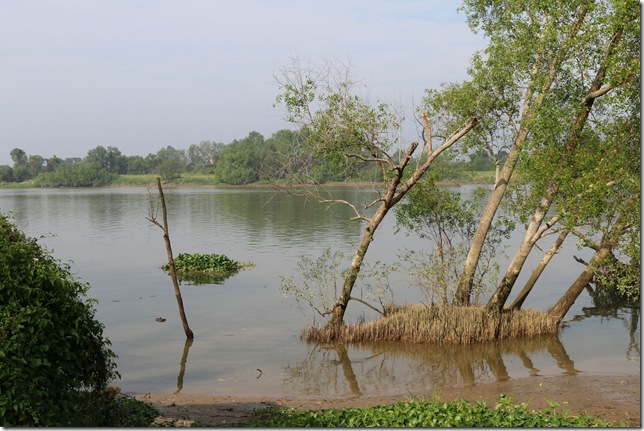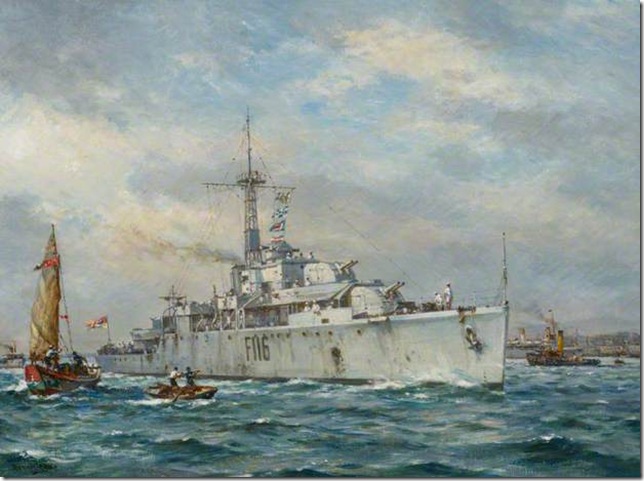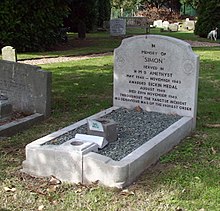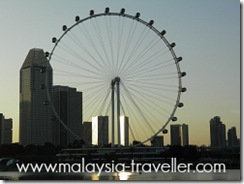 In March 1952, during the Malayan Emergency, the British frigate HMS Amethyst was engaged in counter insurgency duties along the coasts of Malaya. On 9th March Amethyst sailed 30 miles up the Perak River and shelled Communist jungle hide-outs. A newspaper article at the time wrote:
In March 1952, during the Malayan Emergency, the British frigate HMS Amethyst was engaged in counter insurgency duties along the coasts of Malaya. On 9th March Amethyst sailed 30 miles up the Perak River and shelled Communist jungle hide-outs. A newspaper article at the time wrote:
The operation took place in one of Malaya’s blackest bandit spots-a region of dense jungle and deep swamp through which the crocodile infested , Perak River flows.
I estimate that this raid must have taken place somewhere near Teluk Intan which I visited this week and where I took this photo of the river.

The Perak River looks very peaceful these days with no crocodiles on view.
Amethyst’s operation was successful in flushing terrorists out into the open where a number were killed or captured by waiting army and police units.

HMS Amethyst is famous for another, less successful, river mission which took place earlier, in 1949, in China as described in this account:
On 20 April 1949, HMS Amethyst steamed up the Yangtze River to relieve the guard ship HMS Consort at Nanking, preparing to evacuate British and Commonwealth citizens caught up in the advance of the Chinese Communist Forces. At about 0830 hours, Amethyst came under fire from Communist shore batteries positioned on the north shore of the river opposite Low Island. Amethyst was hit again by several shells wounding Amethyst’s Commanding officer, who died from his injuries a day later. The ship managed to send off a signal to all ships in the area, “Under heavy fire, am aground, large number of casualties”. Amethyst received over 50 hits and holes below the waterline. During this time HMS Consort was sighted, flying 7 White Ensigns and 3 Union Jack flags, steaming down from Nanking at an incredible 29 Knots. Consort came under fire from the shore batteries but her 4.5-inch guns managed to knock out the enemy shore batteries and she attempted to take Amethyst in tow. HMS Consort turned about with all guns blazing at the north bank batteries, destroying an enemy position. As she steamed up river for the second time she was fired on by a concentrated number of 37mm anti-tank guns.
She had taken 56 hits and lost 9 killed and 30 wounded. On the 26th of April, after being aground for six days and in the dead of night, a second attempt to free the Amethyst from the mud was successful after she had been lightened forward. She then proceeded to move up river and anchored off Fu Te Wei. Later that day a signal was received: “HM ships London and Black Swan are moving up river to escort the Amethyst down stream. Be ready to move.” But concentrated fire from batteries near Bate Point hit both ships; HMS London was holed 12 times on the port side and lost 12 killed and 20 wounded. HMS Black Swan had 7 wounded. Reluctantly the order was given for both ships to return down river. Finally Lt. Cdr. Kerans decided to make a break for open waters. On July 31st under cover of darkness, Amethyst slipped her cable and proceeded down stream to begin a 104-mile dash for freedom running the gauntlet of Communist guns on both banks of the river.The Amethyst, at full speed ahead, passed through to the mouth of the river and made contact with HMS Concord and sent the time-honoured signal. “Have rejoined the fleet off Woosung…God save the King.”

A book was written about the incident and made into a film, The Yangtse Incident, starring Richard Todd.
This is an example of the British media turning a blunder (the decision to put the ships in such a dangerous situation in the first place) into a morale-lifting triumph, thanks to the heroism of the sailors and marines involved
Another casualty on the Amethyst was Simon, the ship’s cat who was seriously wounded when one of the first rounds tore through the captain’s cabin. The badly wounded cat was rushed to the medical bay where the ship’s surviving medical staff cleaned his burns, and removed four pieces of shrapnel, but he was not expected to last the night. He did survive however and after a period of recovery, returned to his former duties of chasing rats and raising the morale of the sailors.
Following the ship’s escape from the Yangtze, Able Seacat Simon became an instant celebrity, lauded in the British press, and presented with the Dickin Medal , the animal equivalent of the Victoria Cross, in a special welcome when the ship returned to Plymouth.
Like all animals entering the UK, Simon was subject to quarantine requirements and sadly, whilst in quarantine, he contracted a viral infection caused by his war wounds and died on 28 November 1949. He was buried at the PDSA Animal Cemetery in Ilford.

His gravestone reads:
IN MEMORY OF “SIMON”
SERVED IN H.M.S. AMETHYST
MAY 1948 — NOVEMBER 1949
AWARDED DICKIN MEDAL AUGUST 1949
DIED 28TH NOVEMBER 1949.
THROUGHOUT THE YANGTZE INCIDENT
HIS BEHAVIOUR WAS OF THE HIGHEST ORDER
In this respect, Simon has received a more fitting resting place than the 45 Royal Navy and Royal Marines personnel who were killed in the Yangtse Incident, of whom 22 were committed to the waters of the Yangtse and the remaining 23 were buried in a Shanghai cemetery which was subsequently destroyed during the Cultural Revolution and built over. Their sacrifice has however been remembered in a plaque in the British Ambassador’s residence in Beijing and in a memorial at HMS Drake Naval Base at Plymouth.
Like this:
Like Loading...
 See the top Teluk Intan Attractions and sights on foot with this self-guided walking tour. Map included.
See the top Teluk Intan Attractions and sights on foot with this self-guided walking tour. Map included. Test your knowledge of Malaysia with this picture recognition Malaysia Quiz. Can you recognise where these 44 mosques are located?
Test your knowledge of Malaysia with this picture recognition Malaysia Quiz. Can you recognise where these 44 mosques are located? Bukit Jalil Park is a pleasant place to picnic, relax and exercise on the southern edge of Kuala Lumpur. Location map, opening hours and details here.
Bukit Jalil Park is a pleasant place to picnic, relax and exercise on the southern edge of Kuala Lumpur. Location map, opening hours and details here. Bank Negara Museum and Art Gallery is spacious and modern and well worth a visit. Read here for my review with photos, opening hours and location details.
Bank Negara Museum and Art Gallery is spacious and modern and well worth a visit. Read here for my review with photos, opening hours and location details.















